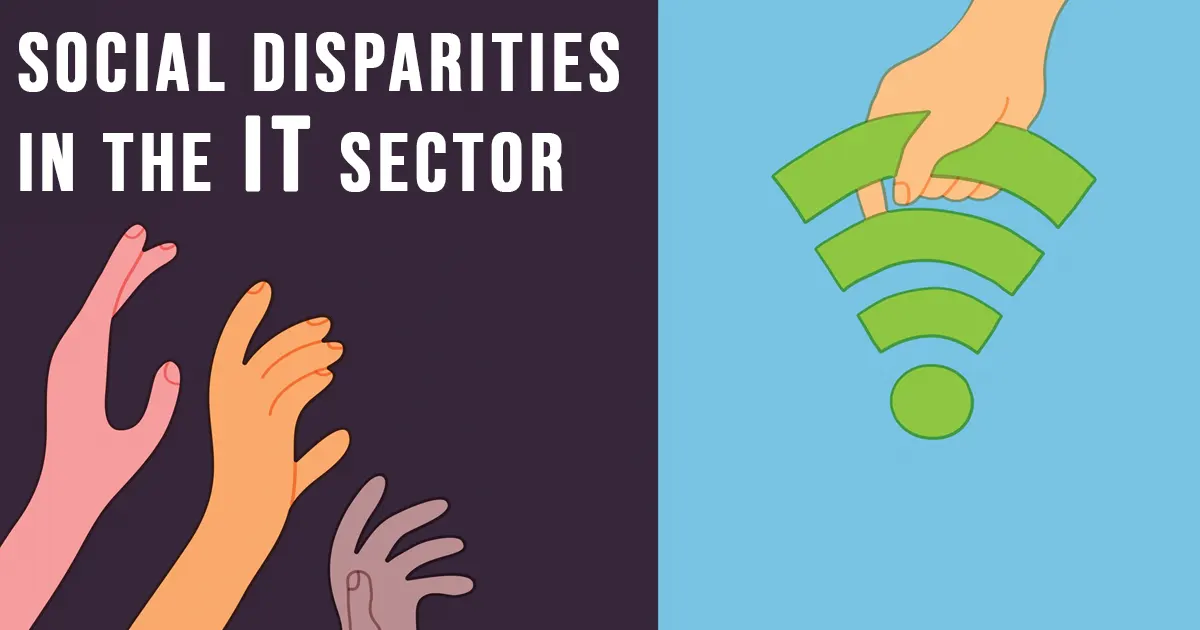GS2- SOCIAL JUSTICE

Why in News?
A recent NSSO survey highlights significant caste-based inequalities in employment rates and wages within India’s IT sector.
Key Findings on Social Disparities in the IT Sector
The study draws on data from two NSSO surveys: NSS 78th round (2020-21) and NSS 68th round (2011-12).
- Employment Probabilities: The likelihood of Scheduled Castes (SC) and Scheduled Tribes (ST) securing jobs in the IT sector stands at just 10%, compared to 27% for upper castes.
- Rising Disparity: The gap in IT sector representation between lower castes and upper castes widened from 11% in 2011-12 to 17% in 2020-21.
- Labour Segmentation: Marginalized communities, including SCs and STs, are often confined to lower-tier jobs.
- Structural Barriers: Workers in these segments face significant hurdles to upward mobility.
- Wage Inequalities: SC and OBC employees in the IT sector earn 24.9% and 22.5% less than their upper-caste counterparts, even when controlling for education and job type.
- Gender Disparities: Female IT workers earn 26.2% less than their male peers, irrespective of caste, although their employment rates are comparable to men.
Causes of Disparities
- Social Inequality: Deep-seated caste disparities, shaped by historical, social, economic, and cultural factors, persist through generations.
- Discrimination: Caste-based biases limit job opportunities and career progression for marginalized groups.
- Economic Liberalization: While economic reforms since 1990 have spurred growth in technology and services, caste-based inequalities remain entrenched.
- Globalization: Although it has created urban job opportunities, the demand for advanced skills has left many lower-caste individuals at a disadvantage.
- Digital Divide: Limited access to technology and education among rural and lower-caste populations hinders their participation in the global economy.
Impacts of Disparities
- Economic Inefficiency: The International Labour Organization (2022) reports that greater workplace diversity enhances productivity and innovation. A 1% increase in racial diversity in management correlates with an annual productivity gain of $729 to $1,590 per worker.
- Erosion of Social Justice: Persistent inequalities deter marginalized communities from investing in skill development, perpetuating poverty cycles.
- National Development Impacts: Excluding a significant portion of the population from equitable economic participation limits the nation’s growth potential.
- Unsustainable Development: The lack of inclusivity fosters social tensions, hindering sustainable progress.
Recommendations to Bridge Disparities
- Transparency in Workforce Diversity: Mandate companies to disclose workforce diversity data publicly on their websites to encourage accountability and prioritize inclusivity without enforcing quotas.
- Entrepreneurship Support: Provide targeted incentives and training for SC and OBC entrepreneurs in high-productivity sectors to enhance economic participation.
- Skill Development: Address skill gaps among marginalized groups to create a more equitable and inclusive job market.
MAINS Question:
“Discuss the persistent social disparities in India’s IT sector. Analyze their causes, impacts on economic and social development, and suggest measures.”




